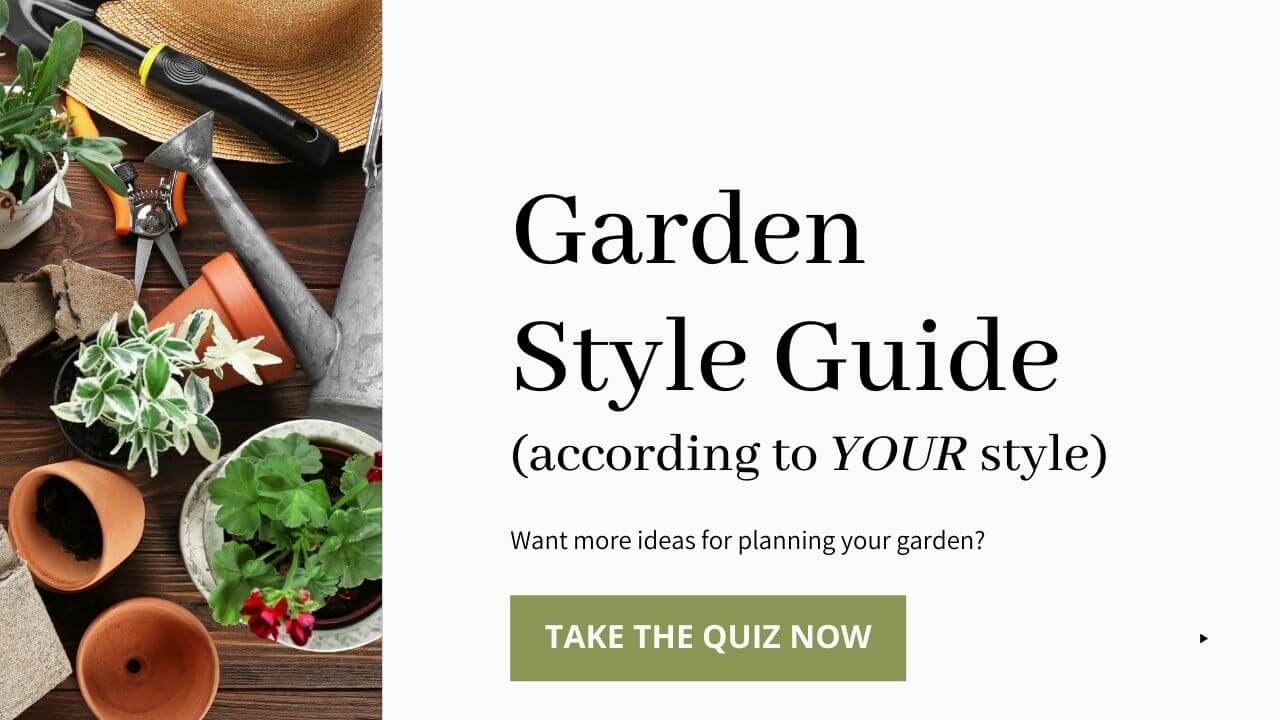How To Create A Flower Border With Year-round Interest

Have you ever wondered how to add year-round interest into your perennial flowerbeds? I know, I know. We love perennials and their abundant blooms. However, when their peak time is over, it often means that it's really over.
If you want to use mainly perennials in your planting area, I'll suggest you add some evergreen 'structural ribbons' to highlight and frame the flowering perennials.
Inspiration From Orchard Beds
When I was traveling in New England, US. I visited the Green Animals Topiary Garden in Portsmouth, RI … and was totally charmed by their Orchard beds. 11 crabapples were underplanted with perennials and low-clipped English boxwood edging framing the gravel paths. It had a simple, rectangular layout, but ah, it was so effective! I liked the abundance of simple mass planting of pink asters in the fall. The thing that made the composition so strong were the repeated clipped low hedges. You can use the same idea on a larger area like in this garden or on your singular planting area. Just imagine it without the paths.

Why Use Low-clipped Evergreen Hedges In Your Flower Border
One of the main reasons for using low-clipped evergreen hedges among your flowering perennials is to add a layer of extra interest that stays year-round.
The 'ribbons' planted of evergreen hedges have many benefits like giving:
- structure for winter
- rhythms for the eye
- inspirational framework to plant with perennials
All great reasons.
To succeed in creating this kind of planting area, focus on the following three points:
1. Choose suitable shapes for your flower border
Another thing to consider is to decide what kind of lines you want to use to make divisions into your flowerbeds? Do you want to use straight lines or flowing curves? Do they divide the flower border diagonally or align with the border's front?
2. Consider the needed number of 'structural ribbons'
And how many lines are you going to add? Do you have room for 2, 3, 4, or even 5? If you have space for an odd number of clipped hedges, you could use 3 or 5 of them. If you had room for a regular number of lines, I would place them asymmetrically - not from one end to the other.
3. Choosing perennials to match with your low clipped hedges
The third thing to consider is the plants you're going to use to' color' between your lines. You can consider having a mixture of plant varieties for a season or more uniform mass planting that will dramatically change from spring to summer and fall.
When we visited the Green Animals Topiary Garden in October, the prominent flowering plants were pink asters. Depending on your garden style, you could also use a mixture of grasses and perennials. The more restricted the plant palette you're using, the more critical it is to choose plants for their long season.

How about those trees
Instead of crabapple, you might have room for a multi-stemmed Amelanchier or small crafted lilacs. Or you can go without any trees if you want to.
There you have it! Now you know how to use evergreen clipped low hedges to add more impact and year-round interest into your flower beds. This idea works great for all garden styles, from romantic to natural and modern. Use the essential style principles to create the evergreen structure with shapes perfect for your own garden style. Take the Garden Style Quiz & download your FREE guide, and you can start creating! Simply click >> HERE. <<

Want to Discover Your Garden Style?
Take my popular Garden Style Quiz to find out which outdoor aesthetic suits you best—and get tailored ideas for building a garden you love.


